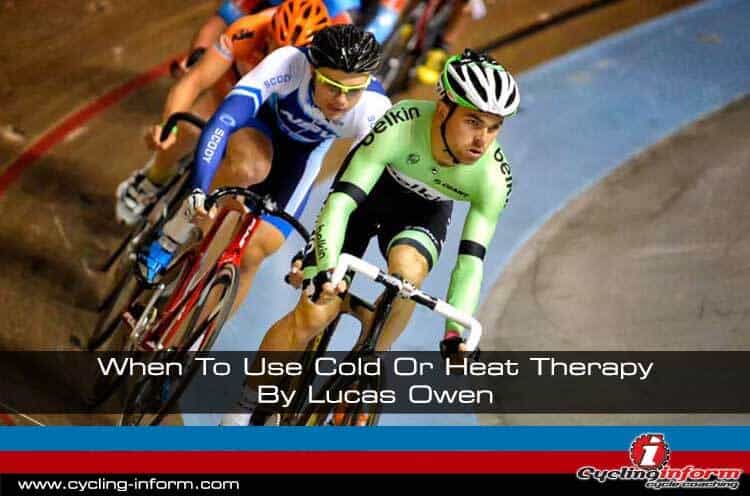Our physiotherapy expert, Lucas Owen discuss when to use cold or heat therapy to get the best healing result with cycling related injures.
Written by Lucas Owen
When to Use Cold or Heat Therapy
Cyclists are susceptible to a broad range of both overuse and traumatic injuries, and correct application of first aid principles is essential to prevent further aggravation as well as enhance healing. The choice between cold or heat therapy is essentially dependent upon whether you want to suppress or stimulate the biological activity in a particular area of the body.
COLD THERAPY
In the case of an acute injury, such as a sprained wrist, a calf strain, or a bone fracture, the resultant swelling is often just as debilitating as the injury itself, and can cause a lot of the pain due to compression of nerve endings in the area.
The four aspects of the R.I.C.E. first aid regime – Rest, Ice, Compression, Elevation – are all intended to reduce activity of the injured area so that swelling can be minimised, especially in the first 48-72 hours after the injury. In this way the acute inflammatory response that is initiated by the body, and which is essential to effective healing, is allowed to progress normally.
During this period ice, or cold therapy, should be applied every 2 hours during waking hours. The duration of application varies due to many factors, including body composition, age, and the area being treated, but the most consistent guideline for effectiveness and safety is to maintain the contact for up to 5 minutes after the area has become numb.
Applying cold therapy for any longer than this introduces the possibility of further injury due to frostbite, especially as the injured region may have impaired circulation and sensation, which makes it more difficult for the body to regulate the temperature of that region. As important as cold therapy is, this is definitely one case where you can have too much of a good thing.
It is also important to note that in the first 3 days after an acute injury it is advisable to avoid anti-inflammatory medications as they tend to promote blood flow, which can increase bruising and swelling in the area and potentially hinder the recovery. If pain relief is required it is advisable during this period to just use an analgesic such as paracetamol.
HEAT THERAPY
The benefits of heat therapy are due to stimulatory effects on the region – increased blood flow, increased lymphatic flow, increased cellular activity, and reduced muscular tension.
The body is constantly repairing and replacing our cells, a process which is even more obvious when you have an injury. Heat therapy simply increases the rate at which the body can heal itself.
After an acute injury it is reasonable to start using mild heat therapy after 4-5 days, provided this does not clearly result in further swelling. Chronic issues also tend to respond well to heat therapy including postural tension, arthritis and joint stiffness.
Heat therapy can be applied for extended periods, but it is again important to consider whether the circulation and sensation to the area being treated is sufficient to monitor and regulate the degree of heating. Common methods for applying heat therapy include wheat bags, hot water bottles and a hot bath or shower, and there are also adhesive patches available that are effective for up to 12 hours.
WHEN TO USE BOTH
The concept of repeatedly alternating between heat and cold therapies has been embraced in sports medicine as a way of improving the rate of recovery from strenuous training or competition, including cycling, but the same principles apply to recovery from any chronic or repetitive overload of the muscular or skeletal systems, such as in the workplace.
In essence the effectiveness of this strategy is still due to the contrasting stimulatory and suppressive effects of heating or cooling a specific region of the body, which assists the body to heal itself more rapidly.
PRECAUTIONS
It is worth noting that anyone with impaired circulation or sensation needs to be aware that they may be less tolerant of heat and cold therapies, and will often need to reduce the duration of application to avoid a thermal injury.
Lucas Owen is a physiotherapist that specialises in treating cyclists and is based in Melbourne. For more information please contact him using the following information:
www.cyclingphysiotherapycentre.com.au
Cycling Physiotherapy Centre
52 Templestowe Road
Bulleen, VIC, 3105
(03) 9852 1618






Leave A Comment